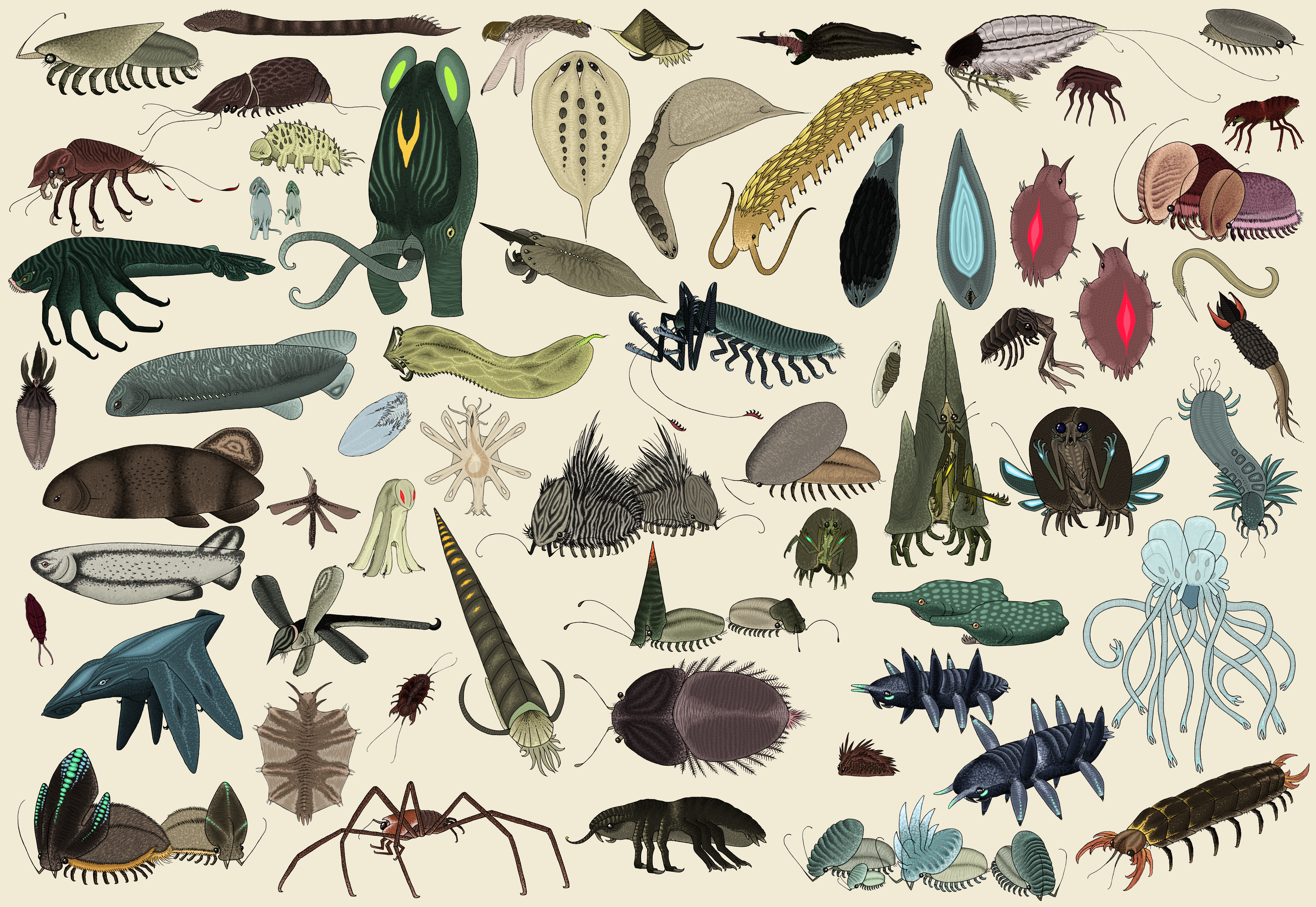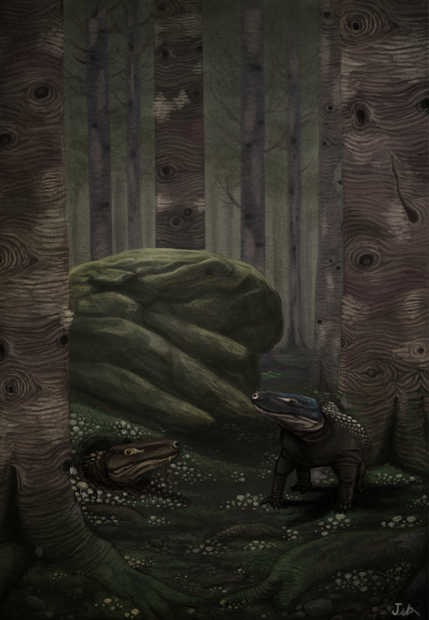HOME | DD
 TrollMans — Apocalypse with a View
TrollMans — Apocalypse with a View

Published: 2018-08-21 13:32:07 +0000 UTC; Views: 11922; Favourites: 255; Downloads: 20
Redirect to original
Description
Dinner for two at the end of times.
---
Late Changhsingian (252 MYA), Northeastern Russia
Archosaurus rossicus (Russian ruling lizard)- a species of proterosuchid known from the Late Changhsingian of Vladimir Oblast. The earliest known species of archosauriform, Archosaurus is the only one definitively known from the Paleozoic. Part of a relatively short-lived family, although they survived the P-Tr extinction event, they died out by the end of the Early Triassic. However, (as you should probably already know) archosauriforms as a whole were incredibly successful afterwards. Known only from fragmentary remains, if compared to its close relative Proterosuchus, it was likely very similar, with a hook-shaped snout and crocodile-like skull and body. Growing around five feet in length, it was one of the larger predators known from the region, and probably hunted prey by ambush, both on land and from the water, its hook-shaped jaw preventing prey from escape once captured.
Megawhaitsia patrichae (Patri[cia Vicker-Ri]ch’s large [Whaits’])- a species of whaitsiid therocephalian known from the Late Wuchiapingian to the Late Changhsingian of Vladimir Oblast. The largest known predator of the region, with a skull length estimated at forty to fifty centimetres in length, resulting in an animal equivalent to the size of a bear. However, the proportions of the animal are uncertain due to the only known remains being a few jaw fragments and teeth. Therocephalians seemingly replaced gorgonopsids in Eastern Europe during the final stages of the Paleozoic as part of a faunal turnover (that also involved the replacement of the large pareiasaurs with dicynodonts) before they themselves were decimated by the P-Tr extinction event and died out near the beginning of the Mid Triassic. An unusual characteristic of Megawhaitsia is the presence of hollow canals within the maxilla connected to the teeth. It’s suggested that these may be venom ducts, and that Megawhaitsia may have had a noxious bite as an adaptation to hunt the large (presumably warm-blooded) dicynodonts it coexisted with.
---
Contrary to very popular depiction, Inostrancevia and Scutosaurus are not known to have existed during the Latest Permian and therefore probably did not live to see the end of the Paleozoic. A faunal turnover occurred during the Changhsingian where gorgonopsids were replaced by therocephalians and large pareiasaurs were replaced by dicynodonts (pareiasaurs showed a reduction in size by the end-Permian). It was a relatively short-lived faunal turnover to be fair, what with Armageddon happening around this time and all (that also said, many components of this ecosystem, the therocephalians, dicynodonts, proterosuchids, chroniosuchians etc., continued into the Triassic for a little bit).
Related content
Comments: 15

👍: 1 ⏩: 0

👍: 5 ⏩: 0

"Dammit, Bob, I told you not to leave the kettle on!"
seriously, fantastic working!
👍: 0 ⏩: 0

That "faunal turnover", are you referring to Olson's Gap?
👍: 1 ⏩: 1

No, this turnover occurred between the Wuchiapingian and Changhsingian (around 253 MYA), and as far as I know, it wasn't an extinction event, more likely just a gradual transition in fauna (of which the Permian certainly had no shortage of) probably caused by climate change and was largely regional.
👍: 2 ⏩: 0

Quite nice work. Stereotype with Inostrancevia and Scutosaurus should disappear. However, you were wrong about Megawhaitsia. You wrote that there is only a partial maxilla, but in fact there is still a partial dentary with alveoli from the incisors and a large canine, but without the postcanine teeth. I mean, the dental system is wrong here.
👍: 1 ⏩: 1

Thanks for the information, I've (hopefully) corrected the errors to be more accurately represented now.
👍: 0 ⏩: 1

I'm glad I've been useful to you. Now it is better. And how about the hair?
👍: 0 ⏩: 1

If it were alive and unburnt there'd be more obvious fur covering, but this one is supposed to have its hair mostly singed off (there is some still on it, but it might be hard to see).
👍: 0 ⏩: 1

nothing more epic than a prehistoric apocalypses
👍: 1 ⏩: 0

"Well at least we won't be running out of barbecue ... "
👍: 1 ⏩: 0

the permian extinction was not so bad in land
👍: 0 ⏩: 0




























